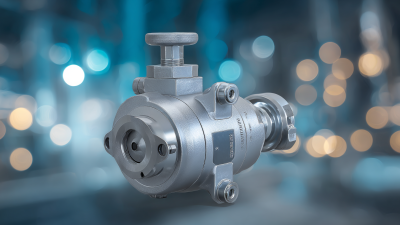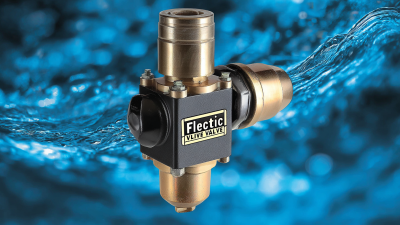
-
Home
-
Products
-
About Us
-
Application Cases
-
CLIENT & FACTORY
-
Test
-
News
-
Contact Us
Leave Your Message

In today's rapidly evolving industrial landscape, the importance of reliable and efficient valve solutions cannot be overstated. Flanged Ball Valves have emerged as essential components in various sectors, including oil and gas, water treatment, and chemical processing, due to their robust design and superior performance. According to a recent market analysis report, the global industrial valve market is projected to reach USD 86 billion by 2027, with flanged ball valves accounting for a significant share due to their versatility and reliability in high-pressure and high-temperature environments.

The unique characteristics of Flanged Ball Valves, such as their quarter-turn operation and excellent sealing capabilities, make them increasingly popular among engineers and decision-makers. Industry studies suggest that the use of flanged ball valves can lead to a 15-20% reduction in energy consumption in fluid handling applications, emphasizing their role in promoting operational efficiency and sustainability. As industries seek to optimize processes and reduce downtime, the demand for high-performance valve solutions like Flanged Ball Valves will continue to grow, solidifying their position as a cornerstone in modern industrial applications.
Flanged ball valves are essential components in modern industrial systems, offering several key features that significantly enhance operational efficiency. One notable characteristic is their robust construction, which is capable of withstanding high pressure and temperatures. This durability ensures reliable performance in demanding environments, reducing the need for frequent replacements and minimizing downtime.
Another important feature is the quarter-turn operation that flanged ball valves provide. This design allows for quick and easy valve actuation, facilitating swift isolation and control of fluid flow. The ability to swiftly open and close valves is particularly advantageous in processes that require precise flow management, thus optimizing productivity. Additionally, the flanged connection simplifies installation and maintenance, ensuring that these valves can be integrated seamlessly into existing piping systems, further contributing to operational efficiency.
| Feature | Description | Benefit |
|---|---|---|
| Robust Construction | Made from high-quality materials such as stainless steel or brass. | Increased durability and resistance to corrosion. |
| High Flow Capacity | Designed to allow maximum fluid flow with minimal resistance. | Enhances efficiency in fluid handling and reduces energy costs. |
| Sealing Performance | Utilizes advanced sealing technology to prevent leaks. | Improves reliability and reduces maintenance needs. |
| Ease of Installation | Designed for quick and easy installation in piping systems. | Saves time and labor costs during setup. |
| Versatile Applications | Suitable for a wide range of industrial fluids and gases. | Adaptable for various industries including oil, gas, and water treatment. |
Flanged ball valves have become essential components in high-pressure systems within industrial applications. Their robust design ensures a tight sealing capability, making them ideal for managing critical operations in sectors like oil and gas, water treatment, and chemical processing. According to a report by MarketsandMarkets, the global ball valve market is expected to reach $13.2 billion by 2026, driven primarily by the demand for reliable flow control mechanisms in high-pressure environments.
One of the key benefits of using flanged ball valves is their ability to withstand extreme pressure without compromising performance. The ANSI/ISA-75.16 standard emphasizes that properly designed flanged ball valves can operate effectively under pressures exceeding 10,000 psi. Their durable construction minimizes the risk of leaks, which is crucial in high-stakes industries where the cost of failure can be astronomical. Furthermore, flanged ball valves allow for easy installation and maintenance, which can significantly reduce downtime, contributing to overall operational efficiency. As industries increasingly aim for sustainability and enhanced performance, the role of flanged ball valves in high-pressure systems is likely to gain even greater importance.

Flanged ball valves play a vital role in modern industrial applications due to their superior performance and reliability. When compared to other valve types such as gate, globe, and butterfly valves, flanged ball valves stand out for their ability to provide a tight seal and minimize leakage. Their design allows for quick and easy operation, which is crucial in processes that require rapid flow control and shut-off capabilities. Unlike globe valves, which tend to have higher pressure drops, flanged ball valves maintain high flow efficiency, making them more suitable for a variety of fluid transfer scenarios.
Moreover, the robust construction of flanged ball valves contributes to their durability and longevity in demanding environments. While butterfly valves are often lighter and take up less space, they may not offer the same level of sealing effectiveness as flanged ball valves. Gate valves, while excellent for two-way flow, can be slow to operate and may not perform well under certain conditions. Therefore, for industries where safety and reliability are paramount, flanged ball valves are often the preferred choice, offering a combination of performance, efficiency, and longevity that is hard to match by other valve types.
Flanged ball valves are essential components in various industrial applications due to their reliability and versatility. These valves can be found in industries such as oil and gas, water treatment, and chemical processing, where they serve critical roles in controlling fluid flow. Their design features a ball with a hole through it, allowing for linear flow control. This characteristic makes them ideal for high-pressure systems, ensuring a tight seal that minimizes leaks and maximizes efficiency.
Tips for selecting the right flanged ball valve include considering the specific fluid's properties, such as temperature and pressure range, to ensure compatibility. Additionally, it's crucial to evaluate the end connections and sizes required for integration into existing systems. Regular maintenance checks can also extend the life of the valves, allowing for optimal performance over time.
In the manufacturing industry, flanged ball valves are used extensively in production lines for material handling, enabling precise flow control. Their ease of operation and minimal pressure drop make them perfect for automated systems, ensuring smooth and efficient production processes. As industries continue to evolve, the demand for reliable and durable flanged ball valves will remain a key factor in maintaining operational excellence.
This chart illustrates the percentage of flanged ball valve applications across various modern industrial sectors. As depicted, the oil & gas industry has the highest usage at 30%, followed by water treatment and the chemical industry, highlighting the critical role of these valves in ensuring efficient and reliable operations.
Flanged ball valves are critical components in various industrial applications, and to ensure their longevity and optimal performance, proper maintenance practices are essential. Regular inspections should be conducted to check for leaks, corrosion, and wear, as a study by the American Society of Mechanical Engineers (ASME) indicates that approximately 50% of valve failures are due to inadequate maintenance. This emphasizes the need for a structured maintenance schedule that includes lubrication, cleaning, and visual assessments.
Additionally, utilizing the right materials and protective coatings can significantly extend the lifespan of flanged ball valves. According to a report from the Valve Manufacturers Association (VMA), valves that are maintained with durable coatings can last up to 30% longer than those that are not. Furthermore, training personnel on the specific requirements for maintaining these valves ensures that they are handled correctly, minimizing the risks of malfunction due to improper care. Implementing these best practices not only enhances the reliability of flanged ball valves but also reduces the overall operational costs associated with frequent replacements and repairs.






